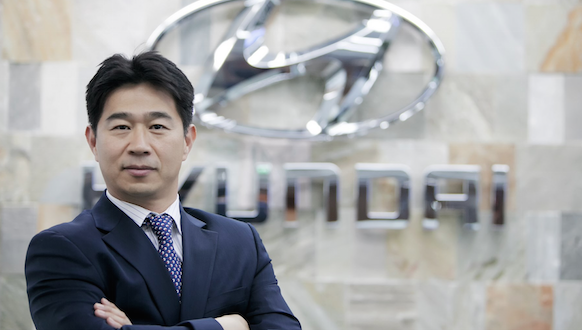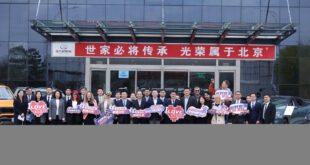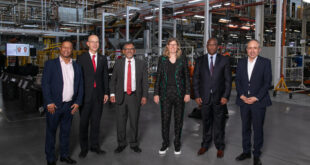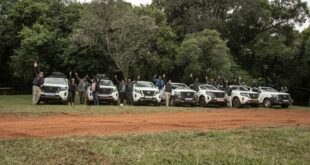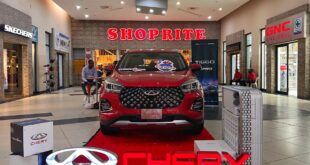The next five years will bring a revolution in car safety as a wave of mass-market models that can predict and automatically respond to danger arrive in showrooms, says Mr. Mike Song, head of Hyundai in Africa and the Middle East.
Today’s new cars already rate highly for protecting drivers and passengers in a collision – what is called ‘passive safety. Song, the Korean carmaker’s head of operations in the region, says we are now entering a new era of “active safety”, as carmakers race to offer the best possible collision avoidance technology in forthcoming models.
“There has never seen so much competition to build the safest car. When you think of the basic crash protection equipment – seat belts, head restraints, crumple zones, airbags and so on – these things arrived very gradually over decades. We are now seeing this level of innovation in the space of five or six years, and new features are moving from the luxury segment into mass-market cars incredibly fast.”
Current models already include active safety features such as anti-lock braking systems (ABS) and electronic stability control (ESC) to reduce the risk of the car skidding or spinning in an emergency. They help drivers keep the car under control, but still rely on the driver to respond.
“Many accidents happen because drivers are too slow to react, and that is true even for good, careful drivers,” says Song. “By the time we see the danger, we don’t have time to brake or turn the steering wheel, and we do not instinctively understand the way the car behaves when we brake or swerve.”
Carmakers want to overcome this human factor. At Hyundai alone, the most recent new models – the new-generation i30 in Europe and Azera in Korea – combine a package of innovations as “Hyundai Smart Sense”, which includes Autonomous Emergency Braking, Lane Keeping Assist, Active Blind Spot Detection, Driver Attention Alert, Advanced Smart Cruise Control and Around View Monitor.
Many of the building blocks of Hyundai Smart Sense come from the company’s research and development program for driverless vehicles.
“In its most simple terms, by combining a front-mounted sensor with the ABS and cruise control systems, the car can detect danger and apply the brakes automatically, either stopping or slowing down,” says Song. “Side-mounted sensors can detect when the car is wandering across a white line or there is car next to you, and tell the power steering to keep you in your lane. Because of how we can connect all these systems, and the processing power now available, the car can see and respond to danger much faster than a human.”
Being able to offer this level of safety is an important selling point, with independent tests such as the NCAP (new car assessment programs) giving consumers a benchmark for comparing their options and making an informed decision.
The United States introduced the first NCAP crash tests in the late 1970s, and most high-income countries had introduced similar assessments by the end of the 1990s. The past decade has seen programs for a growing number of developing economies, with testing either in place or being planned for most major car markets.
“NCAP testing constantly pushes us to build safer cars, to make each new generation safer than the last, and tells buyers whether we succeed or fail,” says Song. “For a new model to achieve a five-star safety rating, is a source of pride and helps increase sales. A low rating would not only be an embarrassment, but would also make many customers walk away.”
The benefits of giving consumers clear, independent safety data be seen by comparing EuroNCAP results from 1997, the year that EU countries introduced their version of the program, and the most recent results.
In 1997, several top-selling small cars achieved only two stars out of a possible four for the level of protection for adult occupants. One popular model scored just one star. In 2016, every car tested achieved three stars or more against today’s far more detailed assessment.
Most cars now achieve either four or five stars. That fifth star – introduced during a major revision of the test program in 2009 – is only available for cars with robust crash avoidance technology, and continued revisions make a five-star rating harder to achieve. EuroNCAP began testing driver assistance features in 2013, particularly autonomous emergency braking, and incorporated it into the rating system at the end of 2014. Updates planned for the years to 2020 will increase the number of situations in which AEB functions.
“When our engineers develop a new model, one of their targets is to achieve high NCAP scores,” says Song. “We want five stars, and a growing number of customers will make a decision based on whether we achieve that. Then to keep those stars, we need to make sure every new model is better than the car it replaces, because the assessment is always being updated to take new technology into account.
“In five years’ time, a car that doesn’t respond to danger won’t be considered completely safe anymore. To meet that expectation, we need to be bringing the best available technology into the market now.”
 ..:: AUTO REPORT AFRICA ::..
..:: AUTO REPORT AFRICA ::..
